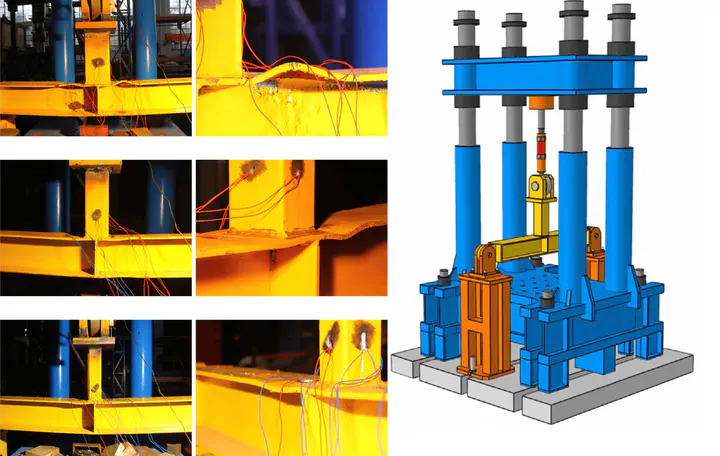Hysteretic behaviour of SHS brace-H-shaped chord T-joints with transverse stiffeners
 Experimental Setup
Experimental Setup
Abstract
The hysteretic behaviour of square hollow section (SHS) brace-H-shaped chord T-joints with transverse stiffeners was investigated using experimental and finite element (FE) analyses. Three specimens with different brace widths were fabricated for the experimental test. The test results indicated that all of the specimens under brace cyclic axial loading failed during the inelastic stage. The failure modes of the specimens included the overall flexural failure of the chord and the local warping failure of the top flange around the brace corner, with slight cracks occurring along the weld toe at the brace/chord intersection. The test results also revealed that the joint demonstrated good hysteretic behaviour. The FE models of SHS brace-H-shaped chord T-joints with transverse stiffeners were subsequently built in the numerical analysis software ABAQUS. The FE and experimental results for the hysteretic curves, backbone curves, energy dissipation, stress distributions and failure modes showed good agreement, thus validating the accuracy and reliability of the FE models. Finally, based on the verified FE method, a parametric study was conducted to investigate the influence of the geometric parameters β, γ, τ, n, ξ and ε on the hysteretic behaviour of the stiffened SHS brace-H-shaped chord T-joints. The numerical results demonstrated that an overly small β or overly large γ reduced the hysteretic behaviour of the joint, whereas τ and ξ had little influence. The addition of a pair of transverse stiffener plates at the brace/chord intersection effectively changed the failure mode of the joint, and the constraint effect of the stiffener was adequately performed on the top flange when ε ≥ β.